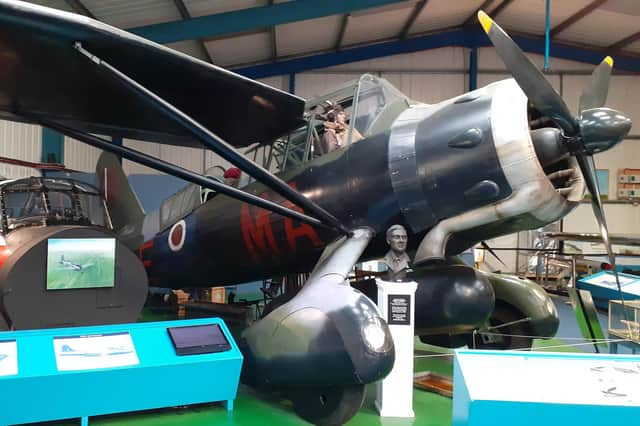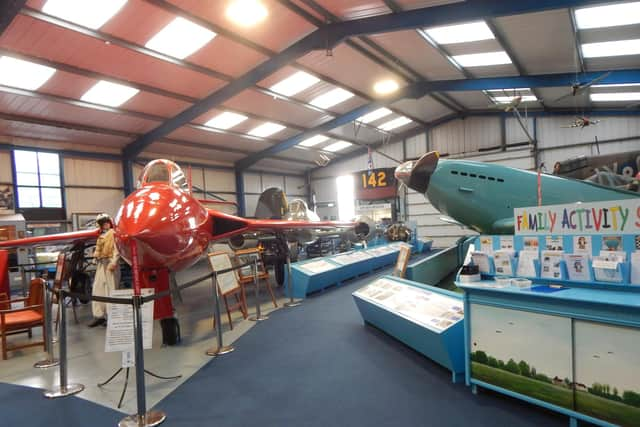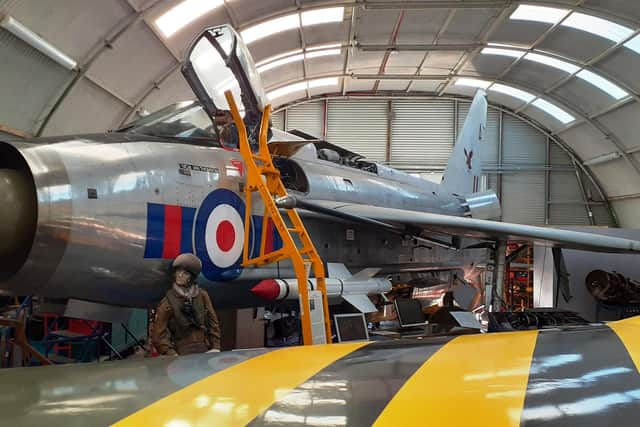A great day out in Sussex: Tangmere Aviation Museum, where aircraft history is brought to life


All these stories and many, many more are brought to life in the fascinating collection of aircraft, military history and stories at Tangmere Military Aviation Museum near Chichester.
There are aircraft to explore, flight simulators to try – you could have a go at flying over 1,000 miles per hour – exhibits and photographs galore, and various events throughout the year such as talks from those who have flown some very special aircraft or exhibitions from local model aircraft groups. But the extra special attraction at Tangmere, which was an RAF fighter station from 1918 until 1958 are the people and the stories they can tell.
The ultimate immersive experience


While many museums rely on displays, audio guides or digital presentations to tell their stories, Tangmere takes a much more human approach.
There are more than 160 volunteers, who give up their time to run and staff the museum absolutely free, are all passionate about the subject, the history or have direct experience of the aircraft themselves in some way.
They are the walking, talking museum guides that make this attraction so special – and mean no two visits will ever be the same.
Mike Bennett is one of those volunteers. “There are some incredible stories,” he says. “We bring those stories to life but we also get people who help us in bringing them to life because they are there, in the museum and start talking about their experiences.


“You can spend as long or as little time as you want here, but we can guarantee that you’ll want to come back!”
The stories behind the exhibits
Some of those stories include Dorothy Colles, a plotter – one of many, mainly women, who ‘plotted’ where allied and enemy aircraft were, based on information coming in by radio as battles were happening live. She was an artist and there’s a collection of her paintings which give a vivid picture of the social history of the time.
There’s the story of James Nicolson from 249 Squadron. His uniform is on display and he’s the only Fighter Command pilot to be awarded the Victoria Cross. He told his story to the BBC and you can listen to a recording of his exploits. With just 10 seconds to get out as his burning Hurricane, which was badly shot up by enemy aircraft, he was already injured and the fuselage was on fire. However, he saw an enemy plane below him so stayed in the aircraft, took the other plane out then leaped, burned, bleeding and cut, from the aircraft – and that’s when the Home Guard shot at him, mistaking him for a German airman.
There’s the lad, just over 18 who was the youngest pilot in the Battle of Britain. He had to jump out of his plane without a parachute and didn’t survive the 12,000 foot fall.
About the planes
Those are just a taste of the human stories. But there are, of course the aircraft themselves. There are eight aircraft inside and five outside – jets that have broken air speed records, a replica of the first Spitfire to fly in 1936 – made by the same men that built the real Spitfires. There’s a Hurricane, which were flying over France from the early days of World War Two in September 1939; A Lysander which would ferry agents to France – navigating by moonlight to drop their top secret cargo.
The latest acquisition is an RAF Folland Gnat T1 – which has an association with the famous Red Arrows, as for years it was used as the Gate Guardian at their bases.
Museum Director, Ed Smith said: “The Gnat was designed by Mr W E W Petter who also designed the Lysander, Canberra and Lightning, examples of which are already in our collection and so this adds well to our aircraft. Research has also found that our late Chairman, David Baron, flew the aircraft as a flying instructor from RAF Valley, back in the 1960s.
Plans are now being made to transport the aircraft to Tangmere and bring it into use as an exhibit and to make the cockpit available for public access on particular occasions.”
Facilities
As well as the exhibition hangar and the aircraft and displays, there is plenty of free parking, a café and gift shop, a meeting/events room and a well-stocked reference library which can be used as a resource for research on all things connected to the RAF and aviation.
Tangmere is fully accessible for anyone with mobility issues – there are even a couple of wheelchairs available to borrow for any visitors who may need some assistance.
Tickets and opening times
It hosts school and educational visits and is open seven days a week between Feb 1 and Nov 30. March to October is 10am to 5pm and in February and November it closes at 4pm.
It is free for under-fives, over 60s and service ID pay £9, adults £11, children £4.50 and family tickets £26.50. Carers go free with paying disabled visitors.
And it’s worth looking at an annual membership – visit as many times as you like. From £20 a year for seniors to £45 a year for a family it’s a great value ticket to give you hours of fun and learning.
Tickets, further information, contacts, news and details of special events can all be found on the website here.